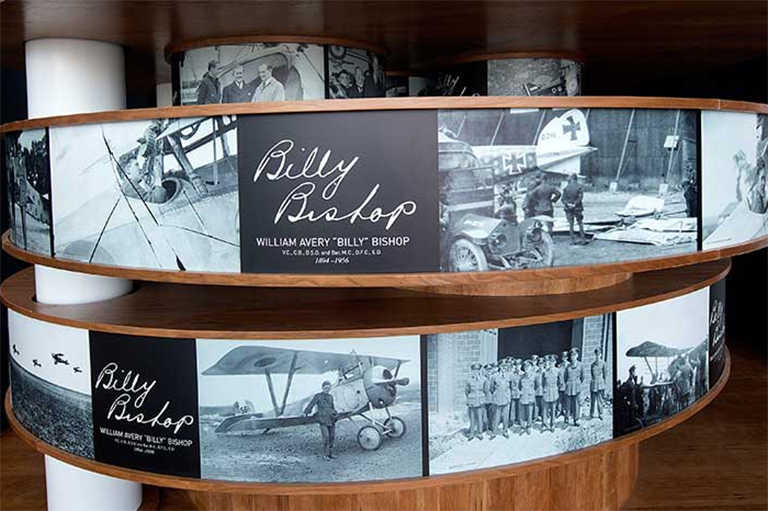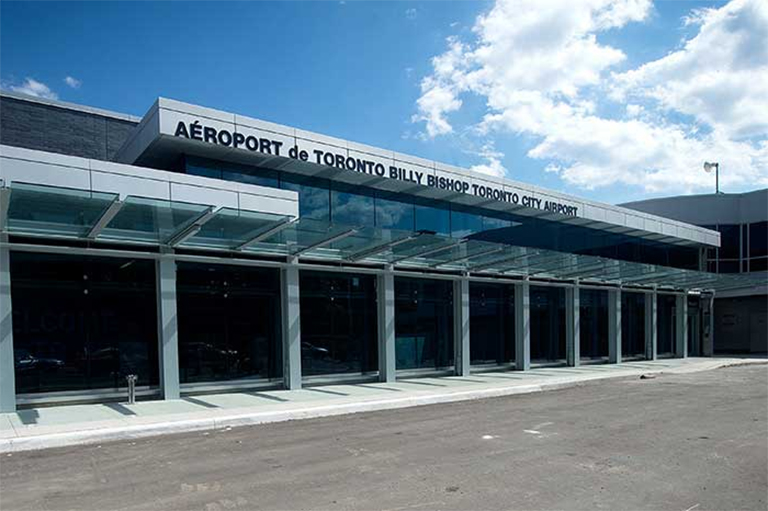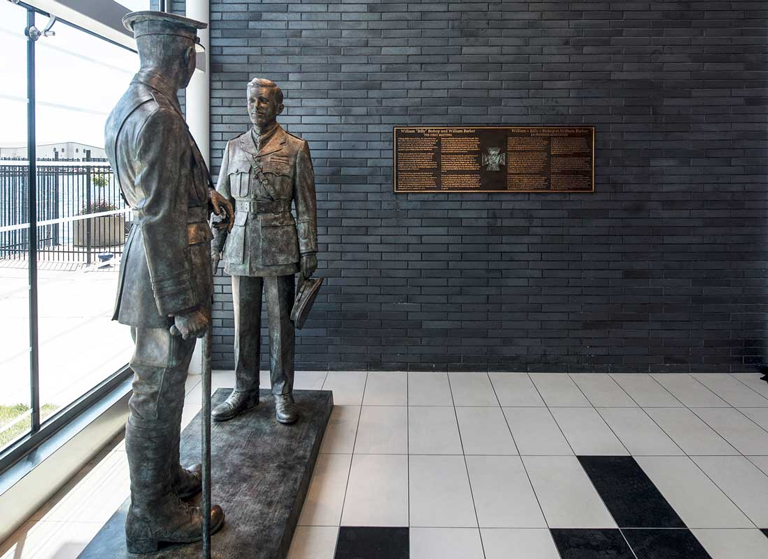Flying Ace Remembered by Airport

Flying aces Billy Bishop and William Barker returned to Canada after the First World War as celebrated war heroes, but the pair were far from keeping their boots firmly on the ground. It was the complete opposite in fact – they began the Toronto’s first civil air service offering flights directly out of Toronto’s waterfront.
Their legacy continues more than seventy-five years later, as 2.4 million passengers continue to fly through Billy Bishop Airport each year. The airport, originally named, Port George VI Island Airport, opened for commercial service in 1939 after plenty of consultation with Bishop.

It is with the Billy Bishop Airport’s new pedestrian tunnel that opened on July 30, 2015, that PortsToronto — owner and operator of the airport — pays homage to Toronto’s aviation history and its pioneers with new art and historical pieces integrated throughout the tunnel’s atrium and mainland pavilion.

From larger-than-life bronze statues of Bishop and Barker to a life-sized model of a Nieuport 17 aircraft, these pieces serve as a tribute to the airport’s historical roots and the Canadian hero for whom the airport was named.
Themes associated with this article
Advertisement




